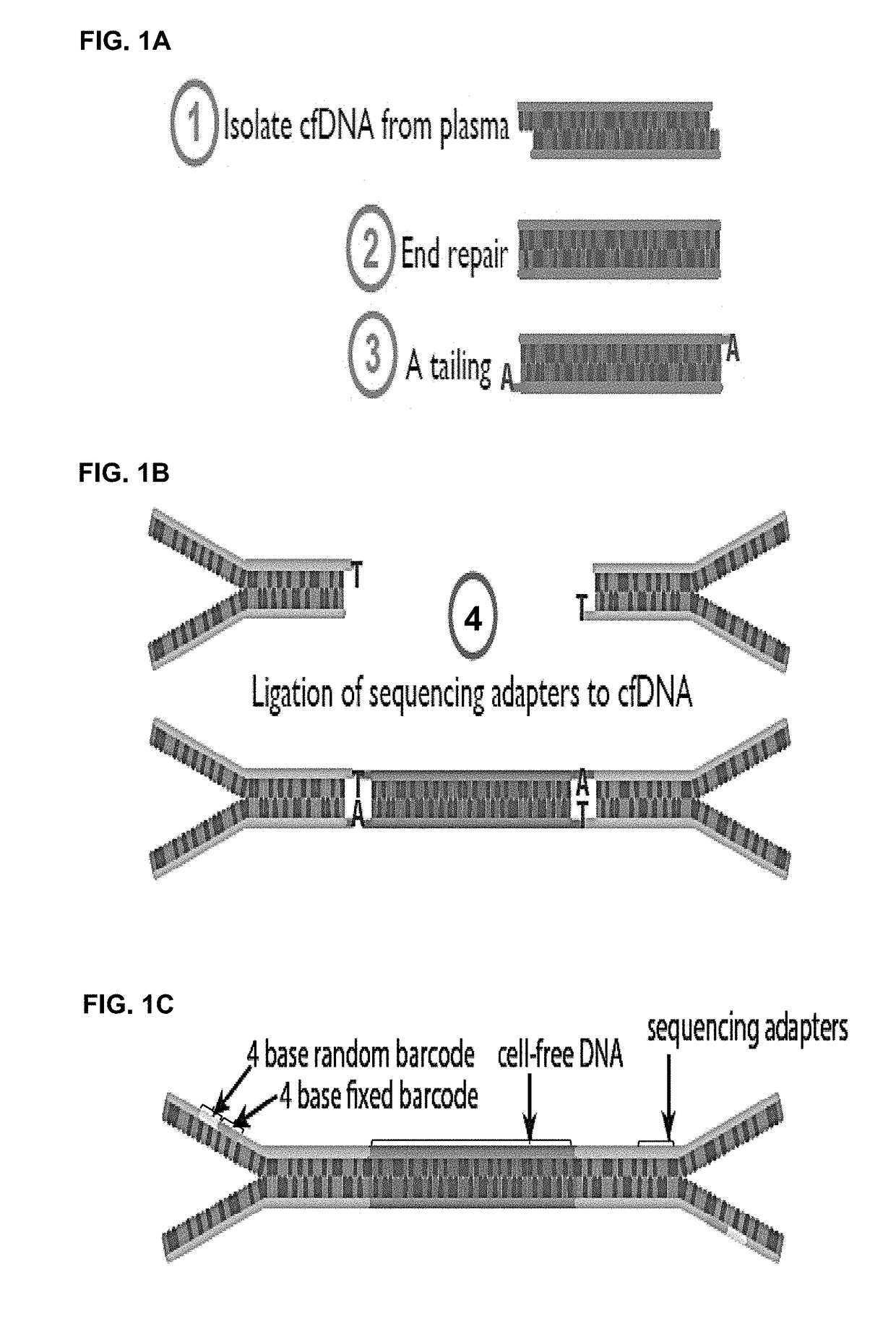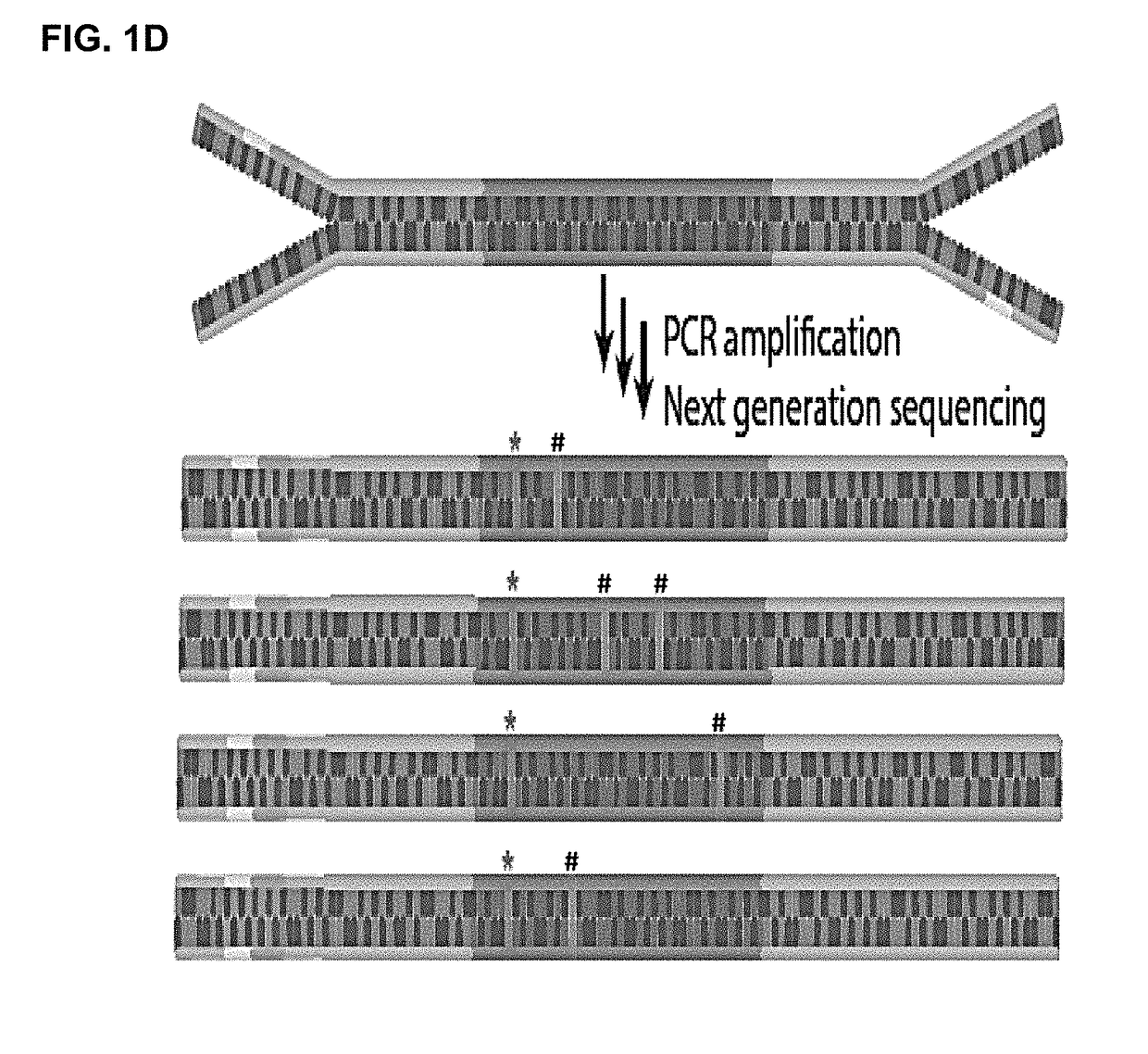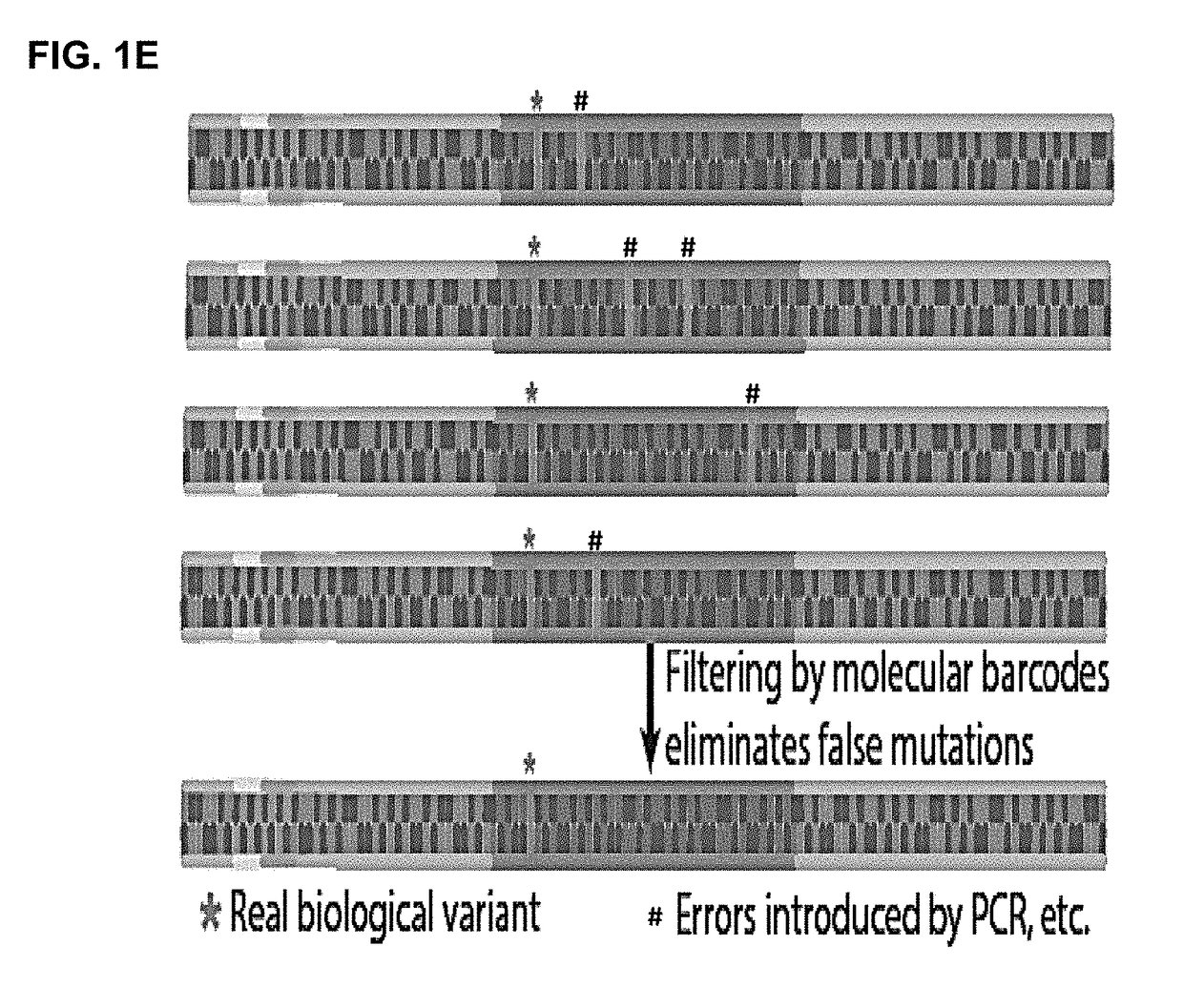Identification and use of circulating nucleic acids
- Summary
- Abstract
- Description
- Claims
- Application Information
AI Technical Summary
Benefits of technology
Problems solved by technology
Method used
Image
Examples
example 1
Reducing Background Error with Molecular Barcoding
[0212]Barcodes were used to eliminate mutations due to background errors, such as errors caused by PCR and sequencing.
[0213]Cell-free DNA was isolated from patient blood samples. The cfDNAs were subject to end repairing and A-tailing (FIG. 1(a)). A unique endogenous barcode for each cfDNA molecule was formed by the sequences at the start and end coordinates of a cfDNA.
[0214]Y-shaped adaptors, which comprise a hybridizable and a non-hybridizable portion, were then ligated to both ends of each cfDNA molecule by T4 DNA ligase (FIG. 1(b)). The non-hybridizable portion of the Y-shaped adaptor comprised a four base random barcode and a four base fixed barcode, where the two barcodes were adjacent to each other (FIG. 1(c)). The Y-shaped adaptor also comprised a universal sequence that can bind to a sequencing primer (FIG. 1(c)). The combination of the random barcode and the endogenous barcode was used as a unique identifier for each of the ...
example 2
(Prophetic): Removing G to T Mutations with Molecular Barcoding
[0217]Cell-free DNA is isolated from patient blood samples. The cfDNAs are subjected to end repairing and A-tailing (FIG. 2(a)). A unique endogenous barcode for each cfDNA molecule is formed by the sequences at the start and end coordinates of a cfDNA.
[0218]Y-shaped adaptors, which comprise a hybridizable and a non-hybridizable portion, are then ligated to both ends of each cfDNA molecule by T4 DNA ligase, to produce a plurality of template nucleic acids (FIG. 2(b)). The non-hybridizable portion of the Y-shaped adaptor comprises a random barcode of four bases and a fixed barcode of four bases where the two barcodes are adjacent to each other (FIG. 2(c)). The combination of the random barcode and the endogenous barcode is a unique identifier for each template nucleic acid. The fixed barcode is pre-defined to identify the source of the cfDNAs, e.g., the patient or the tissue from which the cfDNAs were isolated. Additionall...
example 3
(Prophetic): Reducing Background Error Using Double-Stranded Stem Barcodes and Endogenous Barcodes
[0222]A cfDNAs is isolated from a patient blood sample and subsequently end repaired and subject to A-tailing. A unique endogenous barcode for each cfDNA molecule is formed from the sequences at the start and end coordinates of a cfDNA.
[0223]Y-shaped adaptors, which comprise a hybridizable and a non-hybridizable portion, are then ligated to both ends of each cfDNA molecule by T4 DNA ligase. Each Y-shaped adaptor comprises a universal sequence that can bind to a sequencing primer. The sequence of the fixed barcode is pre-defined to identify the source of the cfDNAs, e.g., the patient or the tissue from which the cfDNAs were isolated. The hybridizable portion of each Y-shaped adaptor comprises a double-stranded stem barcode 2 base pairs away from the ligation site.
[0224]The resulting ligated template nucleic acids are amplified by 12-14 cycles of PCR. The amplicons are then sequenced by n...
PUM
| Property | Measurement | Unit |
|---|---|---|
| Fraction | aaaaa | aaaaa |
| Fraction | aaaaa | aaaaa |
| Fraction | aaaaa | aaaaa |
Abstract
Description
Claims
Application Information
 Login to View More
Login to View More - R&D
- Intellectual Property
- Life Sciences
- Materials
- Tech Scout
- Unparalleled Data Quality
- Higher Quality Content
- 60% Fewer Hallucinations
Browse by: Latest US Patents, China's latest patents, Technical Efficacy Thesaurus, Application Domain, Technology Topic, Popular Technical Reports.
© 2025 PatSnap. All rights reserved.Legal|Privacy policy|Modern Slavery Act Transparency Statement|Sitemap|About US| Contact US: help@patsnap.com



